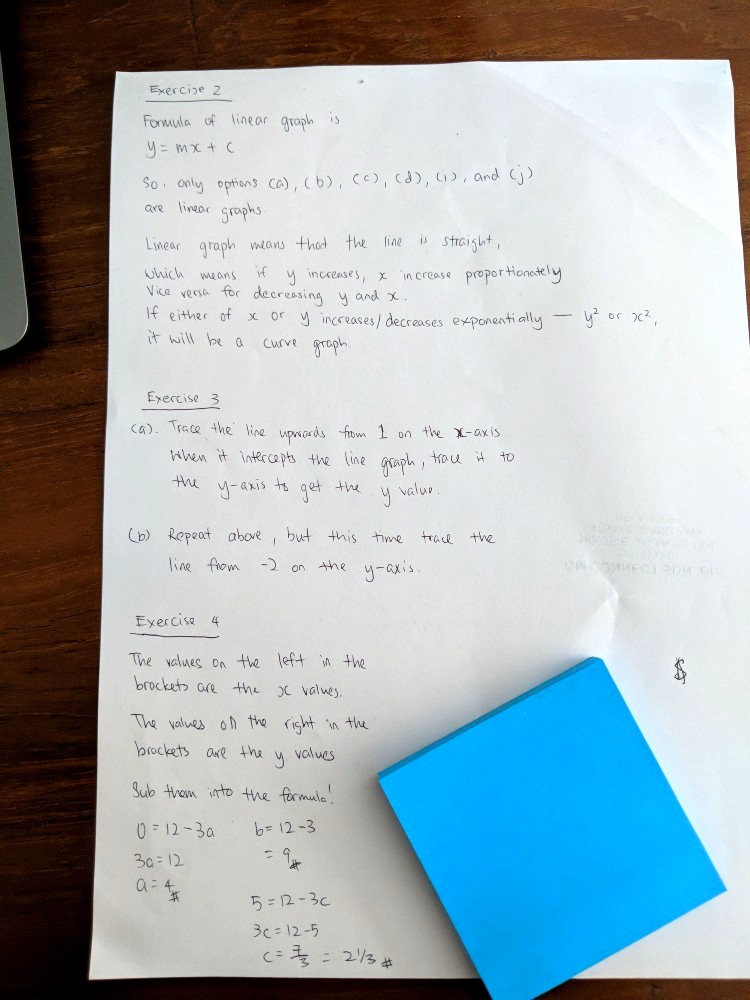Ask Singapore Homework?
Upload a photo of a Singapore homework and someone will email you the solution for free.

Question
Secondary 1 | Maths
One Answer Below
Anyone can contribute an answer, even non-tutors.

I do not understand. Pls help me
y = 2x + 1 is linear.
3y = -2x is linear.
3y = -x + 4 is linear.
-2v = -3t - 5 is linear.
y = -2 is linear, even though it does not contain x.
x = 3 is linear, even though it does not contain y.
2y2 = x + 3 is NOT linear, since y^2 is present.
y = -2x2 + x + 1 is NOT linear, since x^2 is present.
x = 2y + 4 is linear.
2t = -u + 5 is linear.
All the said linear equations contain either one or two variables, all of which are raised to power 1. No squares, cubes etc are allowed.
For exercise 4, here is how it's done.
y = 12 - 3x
The point (a, 0) is on this line. This means that when x = a, y = 0. We proceed to substitute these values into the equation y = 12 - 3x.
0 = 12 - 3a
Bringing over the -3a to the other side,
3a = 12
Dividing both sides by 3,
a = 4
The point (1, b) is on the same line. This means that when x = 1, y = b. We proceed to substitute these values into the equation y = 12 - 3x.
b = 12 - 3 (1)
b = 12 - 3 x 1
b = 12 - 3
b = 9
The point (c, 5) is also on the same line. This means that when x = c, y = 5. We proceed to substitute these values into the equation y = 12 - 3x.
5 = 12 - 3c
Bringing over -3c to the other side,
3c + 5 = 12
Bringing over 5 to the other side,
3c = 7
Dividing both sides by 3,
c = 7/3 = 2 1/3.
y = 20t + 30
This is a linear equation (and therefore produces a linear graph), since y is power 1 and t is power 1.
Now we look at the point A (1, 50).
Does this satisfy the above equation?
Let t = 1, y = 50.
Left hand side of the equation y = 50.
Right hand side of the equation 20t + 30 = 20 (1) + 30 = 20 x 1 + 30 = 20 + 30 = 50
Both sides are the same.
Therefore, the coordinate A satisfies the above equation, and will therefore be on the straight line when drawn on a graph.
Instead, things like (0, 5) will not satisfy the above equation, because 20 (0) + 30 = 20 x 0 + 30 = 0 + 30 = 30 which is not the same value at 5, and therefore (0, 5) will not be on the straight line when drawn on a graph.
See 1 Answer





